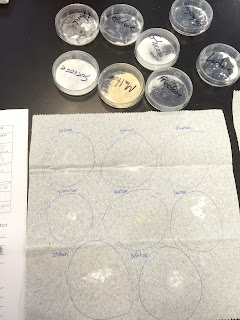Sheep Heart Dissection Video Part 1:
Sheep Heart Dissection Video Part 2: http://youtu.be/vjzb7_2gN_A
Sheep Heart Dissection Extra Credit Video:
1. The purpose of the pericardium is to protect and contain the heart.
2. Arteries differ from veins in that the arteries are thicker and have more muscle than the veins because they need to pump the blood to the rest of the body. The veins also have a larger volume.
3. The purpose of the auricles is to pump blood into the atria. The left auricles pump the oxygenated blood into the left atrium, and the right auricles collect and transport deoxygenated blood into the left atrium.
4. The atria have more fat and fold over, and the right side is much smaller than the left side of the heart because it does not need to pump oxygenated blood to the rest of the body. The left side is thicker because it contains more muscle.
5.The exit from the coronary sinus is a little indentation in the right atrium where the bundle of veins empty out, the inferior vena cava is a big vein that runs into the bottom of the right atrium, and the tricuspid valve is at the bottom of the right atrium and on top of the right ventricle, and it has three cusps and chordate tendinae, surrounded by papillary muscle.
6.
7. The anchoring of the valves by the chordate tendinae and papillary muscles is important because it makes sure that the valves are in place as it contracts. Because the valves undergo a lot of pressure and stress from the powerful contractions, if there was nothing to hold them down securely then they would easily be in the wrong orientation.
8.
9. The function of the semilunar valves is to prevent backflow of blood between the ventricles and the pulmonary artery and aorta.
10. Because the right side of the heart is responsible for processing the deoxygenated blood, if the valves malfunction then there is nothing to prevent the backflow of deoxygenated blood. This causes there to be a build up of both oxygenated and deoxygenated blood in excess in the feet and ankles. If the same thing happened to the other side, then the person would likely have shortness of breath, dizziness and or fainting, and chest pain because there is not enough oxygenated blood going to the rest of the body.
11.
12. The left and right sides of the heart differ from each other in that the right side is much smaller than the left side. This is because the right side of the heart has to pump oxygenated blood to the entire body, so it needs to have more muscle. The left side receives deoxygenated blood from the superior vena cava and the inferior vena cava, so it does not need a lot of muscle. Because of this, the left ventricle is much bigger and has a thicker layer of myocardium than the right side.
13.


















